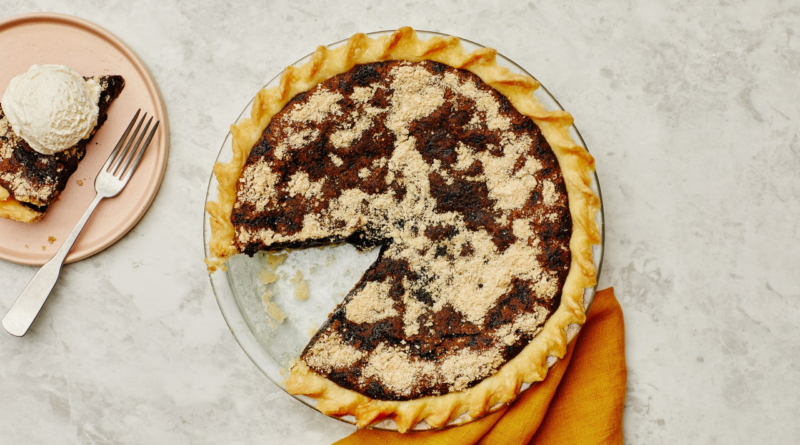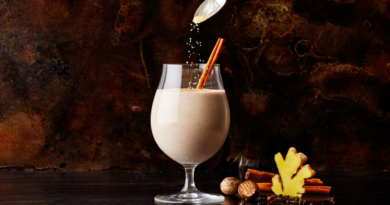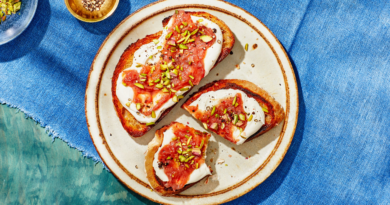Shoofly Pie
Unless you or your grandparents are from Lancaster County, Pennsylvania, there’s a solid chance you’ve only ever heard of shoofly pie. But tasted one? You can’t quite remember. An often overlooked regional American specialty popular in Amish country and in the Mennonite community, it’s believed shoofly pie (sometimes spelled shoe-fly pie) was first made by the Pennsylvania Dutch. However, they likely got the idea from English ex-pats who swapped molasses into their beloved treacle tarts. The origin of its name is also somewhat murky; according to The Oxford Companion to Food, it likely comes from bakers having to shoo away flies from the pie plate.
Shoofly pies are divided into two camps: wet bottom and dry bottom. The former is a crumb pie with a thick, gooey layer of molasses, while the latter is more akin to a coffee cake baked into a pie crust. This one from Wendy Jo’s, a long-standing Lancaster bakery in the city’s Central Market, falls squarely into the wet bottom camp.
Her recipe makes enough pie dough for two 9″ pies, but you can easily freeze half of it. If you don’t have much experience with molasses, know that it comes in a few varieties: light molasses (or baking molasses) is the sweetest, while blackstrap molasses is the most robust. For this pie filling, unsulfured baking molasses is best (read more about the types of molasses). Let the pie cool nearly to room temperature (just slightly warm is best) so the molasses mixture has time to set.
Looking for more pie recipes? Check out our favorites, including ones for crumb-topped apple pie, blueberry-buttermilk chess pie, and a guava goat cheese number that uses store-bought phyllo.




